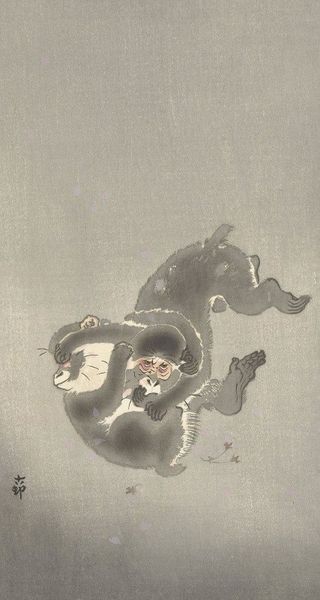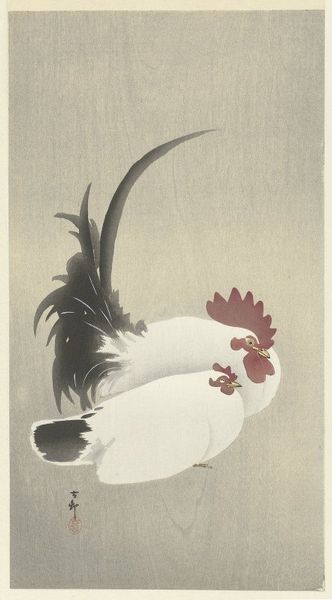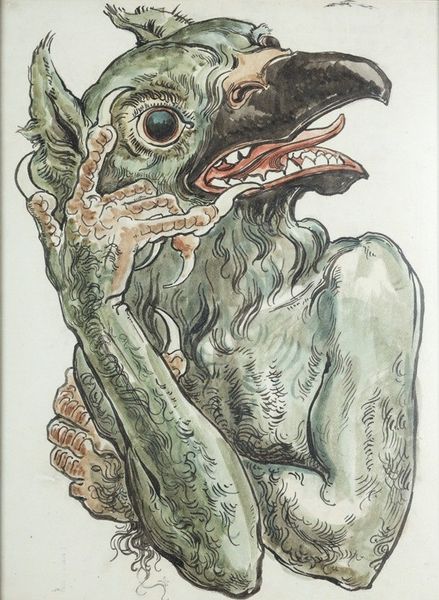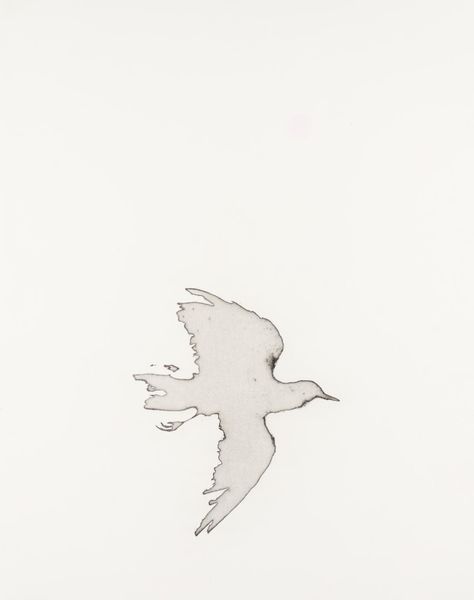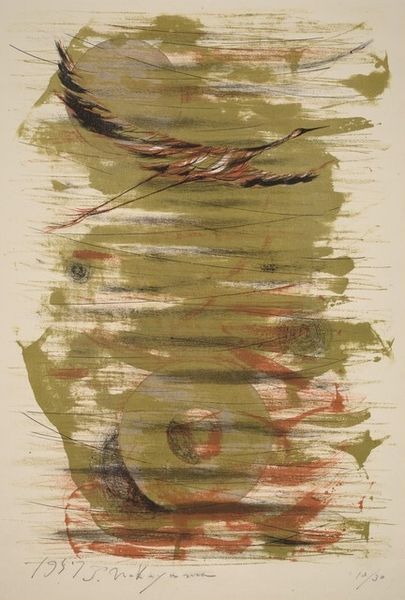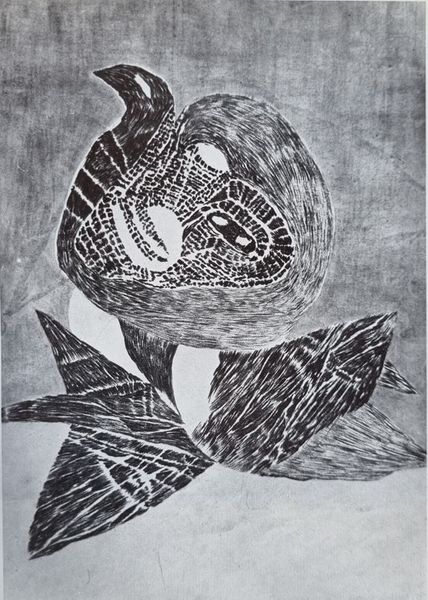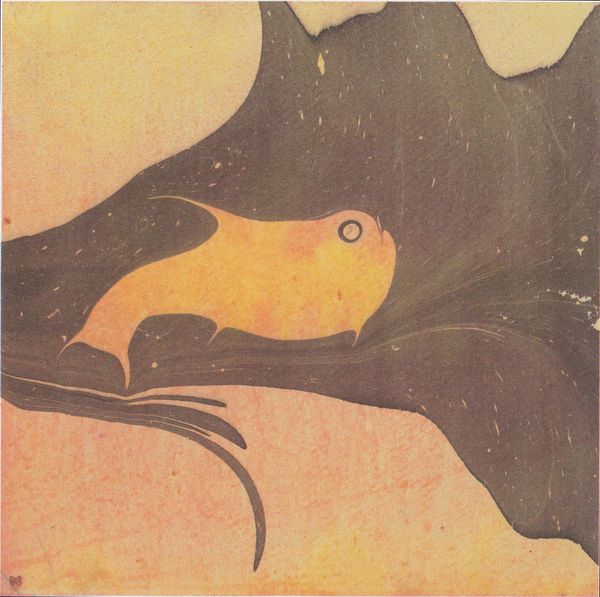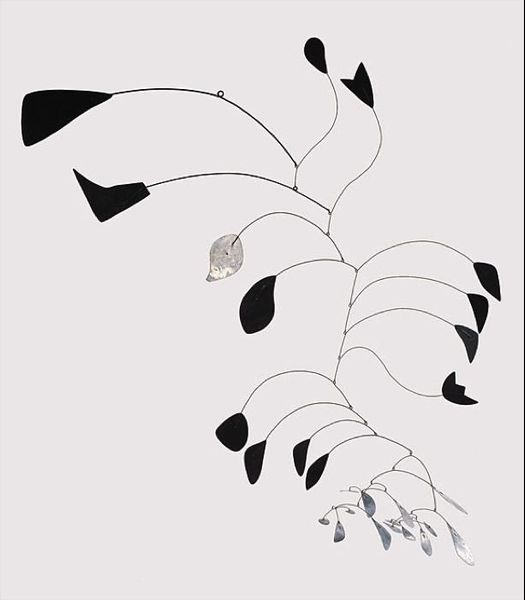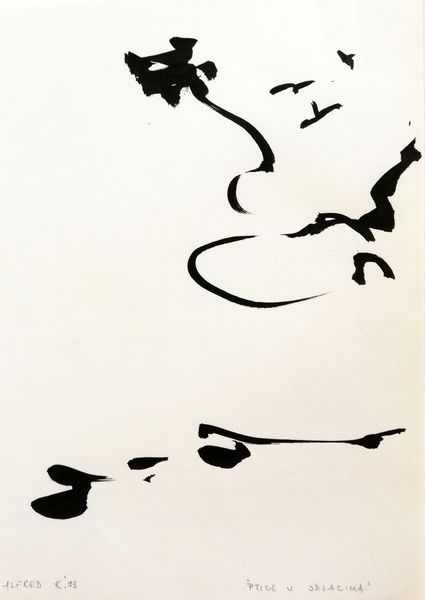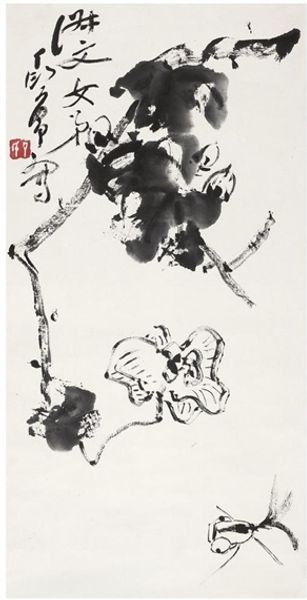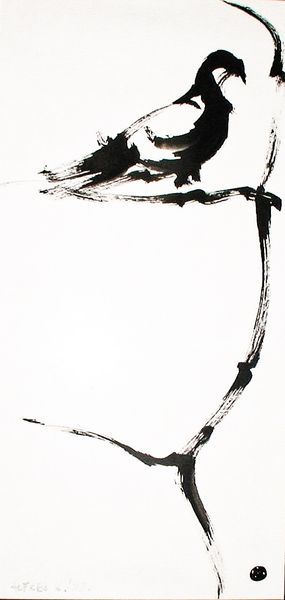
drawing, painting, ink
#
drawing
#
organic
#
painting
#
asian-art
#
landscape
#
bird
#
ukiyo-e
#
figuration
#
form
#
ink
#
line
Copyright: Ding Yanyong,Fair Use
Curator: This is "Wave" by Ding Yanyong. Painted with ink on paper, it depicts a bird, seemingly afloat, rendered in swift, evocative brushstrokes. Editor: It has such a wistful feeling, doesn't it? That bird looks almost lonely, suspended there on the paper. And the color palette… the subtle greys… it's quite somber. Curator: The somberness you perceive isn’t accidental. Ding Yanyong, while drawing on traditional Asian art forms, like the literati painting style and even perhaps a hint of ukiyo-e in its focus on fleeting moments, also lived through tumultuous times. His art often carries a sense of longing, reflection, and resilience that he experienced as a refugee and immigrant. Editor: That’s fascinating! I love knowing the biographical backstory because, otherwise, I would simply assume a beautiful rendering of a duck. Now knowing this piece was composed by Yanyong in a period where he and many artists were displaced from China to Hong Kong, his intention in this landscape comes sharply into focus as this one animal existing with what seems to be the trace of one small wave to its front. Curator: Precisely! While seemingly simple, his painting is a quiet subversion against the politicization of art in China during that time, when artists were under pressure to celebrate revolutionary ideals. It almost operates like an exquisite act of remembering, honoring the spirit of individualism amidst social change. The wave, or lack thereof, might embody those anxieties of displacement that feel larger and overwhelming even within landscapes of migration. Editor: Yes, its placement against the white negative space feels pointed—it's an existential portrayal, not a natural one. The brushstrokes aren't just describing a bird; they're expressing a feeling. A feather here, a swirl of ink there – everything seems to resonate with inner emotion rather than pure observational precision. What do you think a contemporary audience can take away from viewing Yanyong’s work today? Curator: I think the "Wave" and Yanyong’s oeuvre offer a gentle invitation to seek complexity in what seems outwardly simple. He was always striving to harmonize eastern and western artistic influences. Today, in an era of rapid consumption of information, his work feels even more resonant: it teaches us how a little introspection and art can guide viewers through chaotic circumstances and still create stunning observations.
Comments
No comments
Be the first to comment and join the conversation on the ultimate creative platform.
